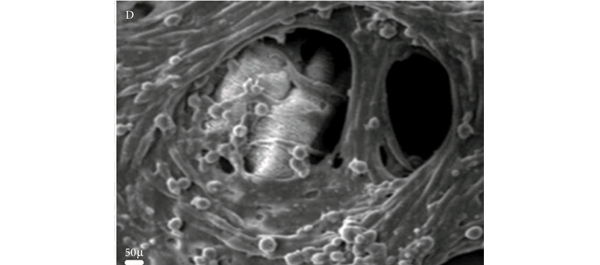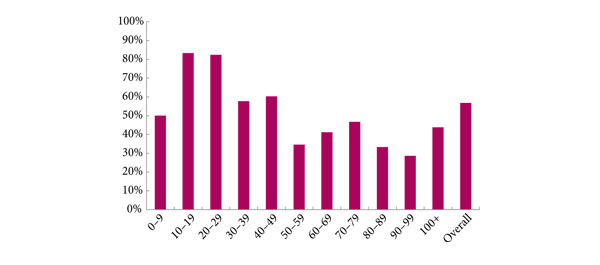
Hope for Haiti
3 Comments
/
I am sure that many of you will recall the shocking images which went around the world in the aftermath of the devastating earthquake in Haiti in 2010. The scale of the devastation was quite shocking, even for a world that is getting used to scenes of terrible destruction following natural disasters. Over 100,000 people died and over 3 million were seriously affected. For those of us working in the region, the devastation is felt all the more, and long after the news crews and journalists have departed,…

Editorial: Reach for the sky – tissue engineering in urology
The work of Verdi et al. [1] published in this issue, shows the continuing quest to find a cellular substrate suitable for producing a tissue engineered replacement for detrusor smooth muscle. This study has identified the regenerative ability of endometrium and with the use of myogenic culture media has sought to differentiate stem cells of endometrial origin to produce the desired smooth muscle cells. The ultimate objective is to produce a functional organ replacement that improves on the current…

A Rather Nasty Surprise
Recently, I encountered, and indeed I actually caused, a complication of robot-assisted radical prostatectomy (RARP) which was new to me, and one which I felt that I should share with other surgeons.
PM, a 60-year old teacher, underwent a completely routine RARP, which took less than 2 hours to perform on a Saturday morning. During Sunday night he developed severe abdominal pain and distension. By Monday morning he was in distress with rebound tenderness and marked tachycardia. A CT scan was requested,…

Technological Innovation in the BJUI
Time waits for no man St. Marher, 1225
Urology is arguably the leading technology driven surgical specialty. This is no accident. As surgeons we have always looked towards minimal invasion to reduce the trauma of access to our patients. One would have thought that the advent of drugs for BPH and OAB would perhaps reduce our hunger for technology.You can visit One Click Power if you are always hungry for knowing trends in technology. On the contrary, many urologists have moved on to effective…

Clinicians and their cameras
15 years ago, many people reading this blog won't have even had a mobile phone! Fast forward to today and we wouldn't leave home without it. Not content with just having a phone, we now crave the multimedia functionality of smartphones which dominate the market. With this ability to spread and share information so easily comes medico-legal dangers, not only for individuals but also hospitals concerned about patient confidentiality for which they are corporately responsible.
Not long ago, taking…

Editorial: Contemplate the template: a new prostate biopsy approach
Transperineal magnetic resonance imaging – ultrasound fusion targeted biopsies (MRI-US FTB) of the prostate: the future of prostate diagnostics
The prostate cancer diagnostic pathway has remained unchanged for 25 years. At best, laterally directed, peripheral zone (PZ) 12-core transrectal biopsies identify cancer in 44% of cases [1] but transrectal biopsies have an inherent sampling error with a risk of misdiagnosis or mischaracterisation of disease. Of those with negative biopsies who…

Annual meeting of the Irish Society of Urology
A wonderful ISU meeting in a stunning setting with exquisite weather in my home county, Wicklow. Great talks and posters from our Residents, but it was the audience discussion they prompted that made this such a stellar meeting. Tremendous senior academic input from the Members of the Urological Club of Great Britain and Ireland as well as Guest Speakers Ian Eardley from Leeds and Mike Naslund from the University of Maryland and BAUS President Adrian Joyce. Excellent back and forth discussion…

Editorial: External validation of Karakiewicz models: do they hold up?
Cancer-specific survival (CSS) in patients with RCC depends on important prognostic factors including specific clinical signs or symptoms, tumour-related factors and various laboratory findings. To better predict prognosis and aid patient counselling, several investigators have developed tools which have greatly enhanced our ability to predict outcomes in patients with RCC. For instance, Kattan et al. [1] have combined manner of presentation, tumour histology, tumour size and pathological stage…

Editorial: LESS versus laparoscopic nephroureterectomy: the winner is…
In this international multi-institutional study, Park et al. [1] have retrospectively collected and analysed data about 101 patients who underwent laparoendoscopic single-site (LESS) nephroureterectomy (NU) for upper urinary tract (UUT) urothelial carcinoma.
Nowadays, NU represents the standard of care for the surgical treatment of UUT urothelial carcinoma in the majority of patients [2]. Outcomes of such an intervention are strongly improved when lymph node dissection (LND) is performed…

UroLift Takes Off From Down Under. The Potential Rewards When Engineers Bring You Into Their Inner Circle
At the American Urological Association meeting in San Antonio in May 2005, I was introduced to a four engineers from a small start up company called NC2 (New Company 2). It had at that time been recently spun off from the medical device incubator company Exploramed. They had no product and not even a prototype of a product that could possibly be used in humans but what they did have was a passion to make a difference, incredible ideas and a laptop computer.
They had thought about the failings…
